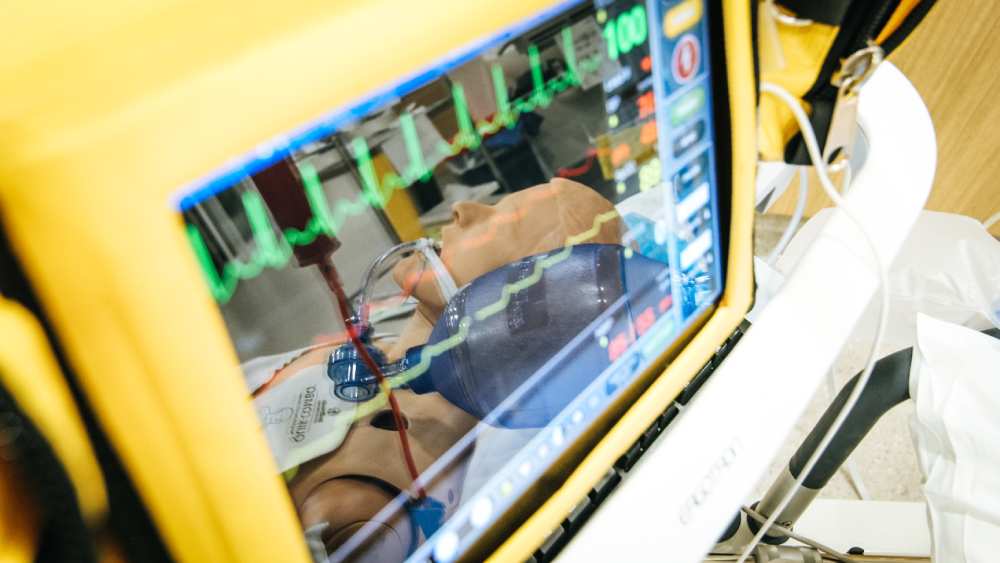While many of us associate VR with the metaverse, not everybody understands that virtual reality is being widely adopted across the healthcare industry. VR doctors are now able to remotely take appointments in an Australia-wide VR surgery, while VR nurses can offer treatment suggestions to VR patients in a VR mental health clinic. Several companies have spotted business opportunities for such services, which could help to speed up the recovery of patients without the need to routinely attend a treatment centre in person. As Australia embraces the development of VR healthcare, we take a look at how it could help improve recovery times.
However, a VR treatment doesn’t necessarily have to take place outside a conventional hospital setting. Many patients experience anxiety (often referred to as “white coat syndrome”) while awaiting appointments and procedures. One company recognised the apprehension patients often felt, and implemented the use of a VR medical headset to allow patients to view calming landscapes and scenes, both prior to and during operations. In a pilot study, 100% of participants reported an overall improved experience while wearing a VR hospital headset, with four out of five saying they felt less pain after wearing a headset post-treatment.
VR medical recovery can also be applied to those recovering from serious injuries. Training for those recovering from stroke can help to diagnose the consequences of illness, allowing doctors to draw up the best possible recovery plan for their patients. With more accurate diagnosis, VR can therefore speed up recovery in VR patients, as it allows them to focus on goal-oriented tasks within the VR hospital environment – the gamification of rehabilitation, in other words. With a fun, target-focused virtual reality environment, patients are likely to want to receive the “reward” of completing certain tasks, which could speed up recovery.
Cancer patients can also benefit from virtual reality to help them during chemotherapy. VR can be used as a coping mechanism that helps to distract the attention of the patient away from pain and discomfort, by helping to immerse them in a virtual adventure. Passing the time during chemo doesn’t have to amount to simply playing games, though. VR tasks can be enjoyed which help to improve memory and keep the “brain fog” associated with cancer therapies at bay. VR therapy could also serve as a relieving factor that diverts from other side effects including vomiting, fatigue, general weakness and vertigo.
Regardless of the particular illness a patient is recovering from, the VR industry can play a huge role in overall patient recovery. By increasing the work of the brain and its co-operation with limbs in a VR setting, patients can help rebuild hand-eye coordination. It is estimated that in comparison to traditional offline therapies, patients are likely to improve their motor skills during VR hospital exercises by 20% or more. Those with motor impairment could also recover up to 15% faster with VR training. In addition to helping with a speedy recovery, patients also receive instant detailed feedback on how their rehabilitation is going – and this could significantly improve health condition tracking.
Summary: How VR enhances patient recovery in healthcare?
VR technology is widely adopted in the healthcare industry, allowing VR doctors to remotely attend to patients and VR nurses to offer treatment suggestions, speeding up patient recovery.
VR medical headsets are used to alleviate patient anxiety before and during operations, resulting in an improved overall experience and reduced post-treatment pain.
VR training aids stroke recovery by diagnosing consequences and creating goal-oriented tasks, accelerating the recovery process for VR patients.
Virtual reality serves as a coping mechanism for cancer patients during chemotherapy, distracting from pain and discomfort while engaging in memory-improving tasks.
VR hospital exercises aid in rebuilding hand-eye coordination, leading to improved motor skills and faster recovery compared to traditional offline therapies. Instant detailed feedback enhances health condition tracking for patients.
FAQs
How virtual reality is used in medicine?
Virtual reality has seen a lot of success in the area of pain management. VR is a highly effective method of drawing and holding the attention of a patient, stimulating the brain and keeping patients entertained. This immersion is ideal for potentially painful procedures like skin grafts or injections.
Do doctors use virtual reality?
Yes! Doctors use VR training for a series of purposes, including explaining in more detail what a patient’s condition means. By putting a patient into a VR landscape, doctors use hyperrealistic models to present the injuries that a patient is suffering from and how the causes of these injuries worsen conditions, acting as a preventative measure.
Is VR used in hospitals?
VR is being used in hospitals, both in training staff and in patients. Patients use VR for a range of reasons, including learning all about their treatments, stimulating the minds of patients undergoing psychological therapy and using games to support the use of physical therapy in the case of long-term injuries.
How is VR used in healthcare and surgery?
VR primarily has been used in surgery and training new surgeons. By creating 3D environments and virtual patients ready for interaction, trainee surgeons complete the procedures that they would on standard patients without the hospital having to pay for dummies for the operation or risking the health of actual patients.
How has virtual reality helped in healthcare?
Virtual reality has helped in healthcare in a range of ways, with one of the most important being information transfer. Patients specifically learn a lot through the use of VR in healthcare, as they see visual representations of their own illnesses or conditions and watch 3D representations of what their treatments are.
What is virtual reality in healthcare?
Virtual reality refers to the use of systems that create 3D environments that users visit through the use of VR headsets and controllers that go into a user’s hands. VR in healthcare refers to the use of these systems in a healthcare environment, typically through training and patient interaction.


